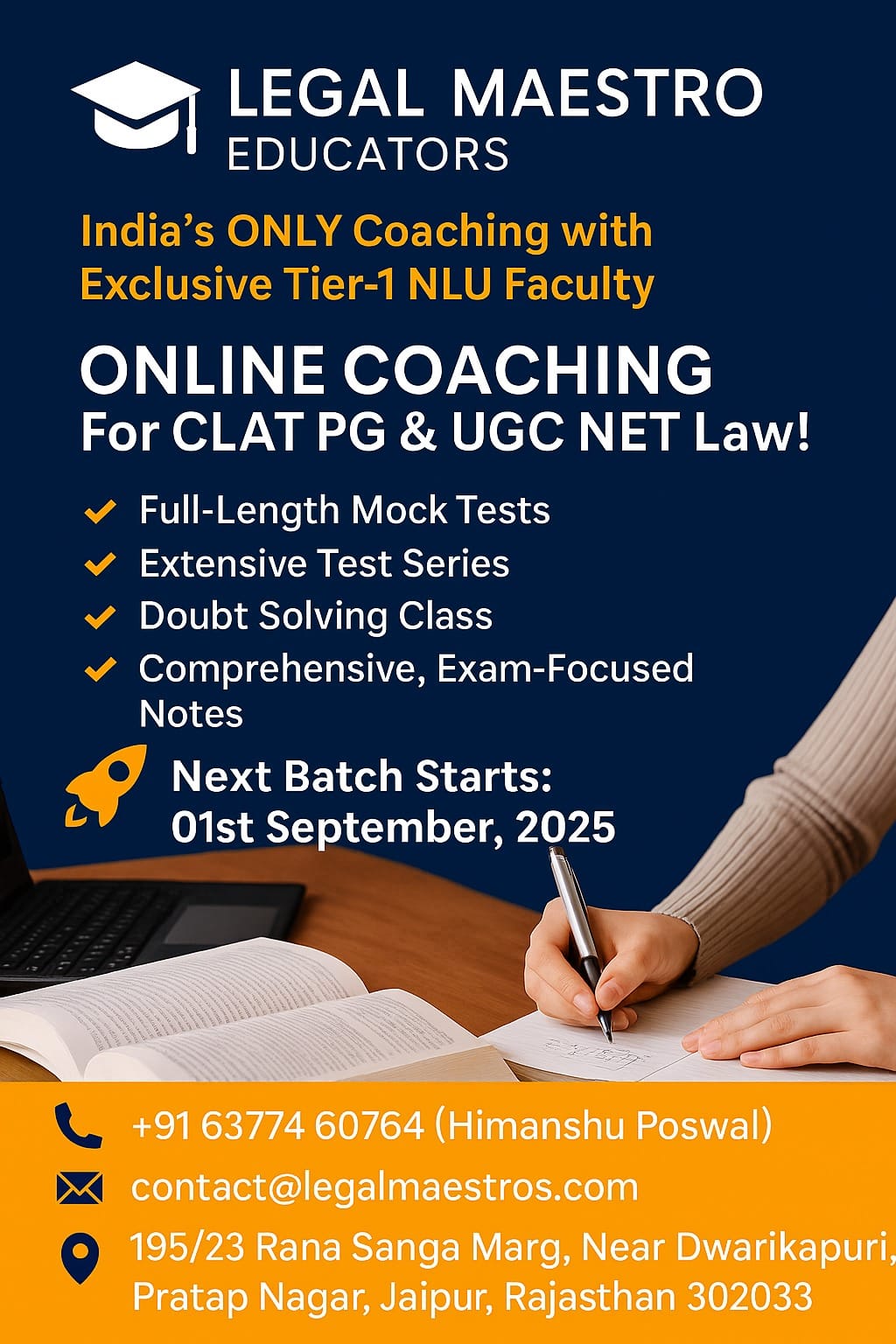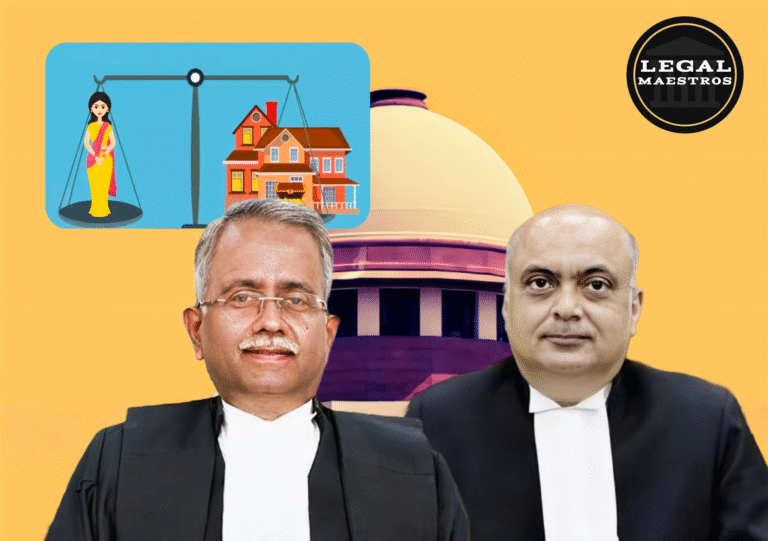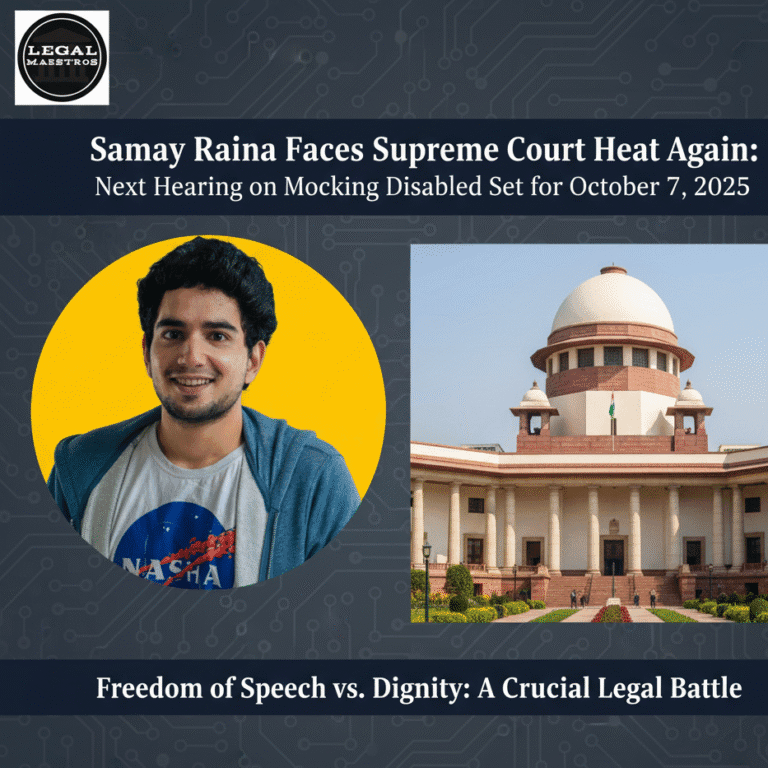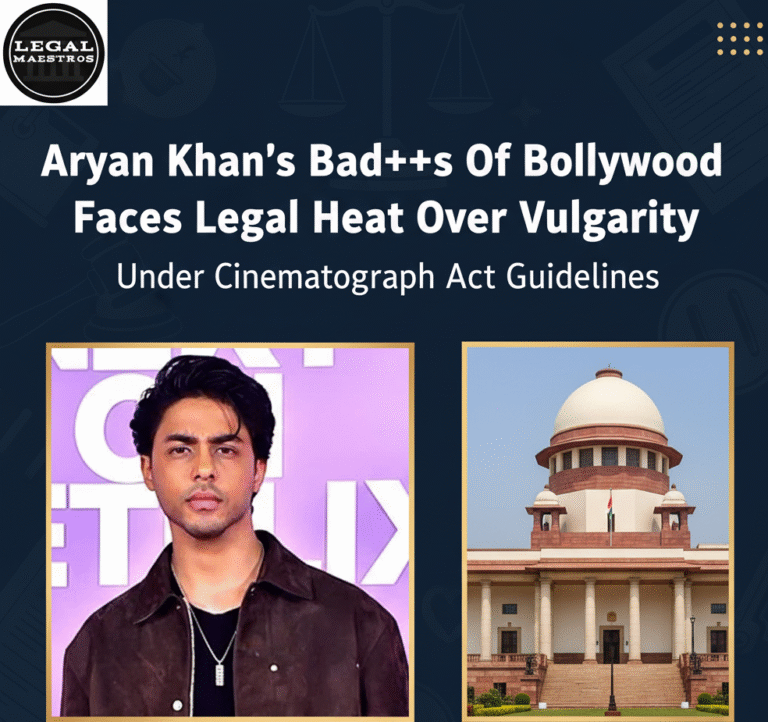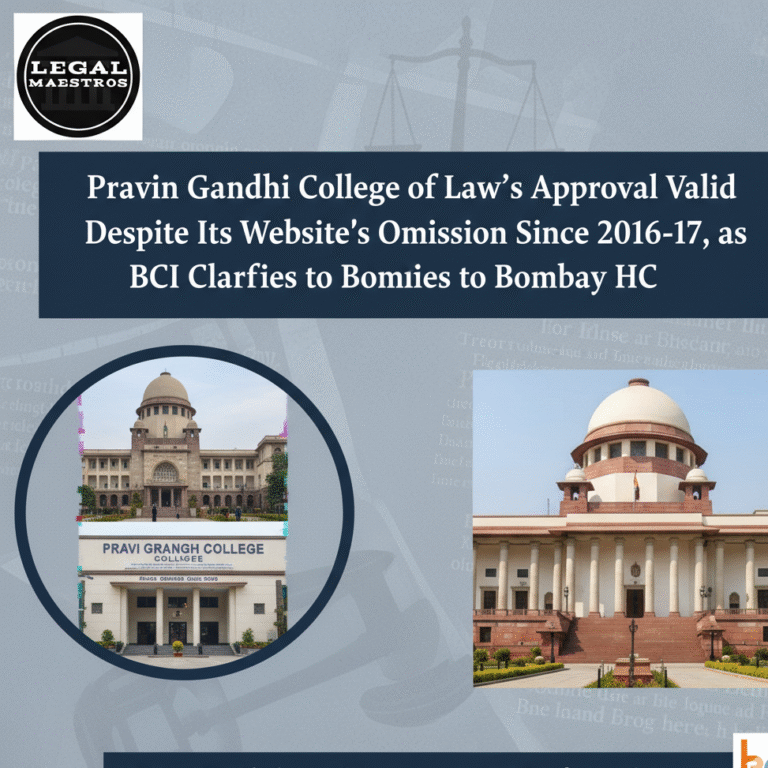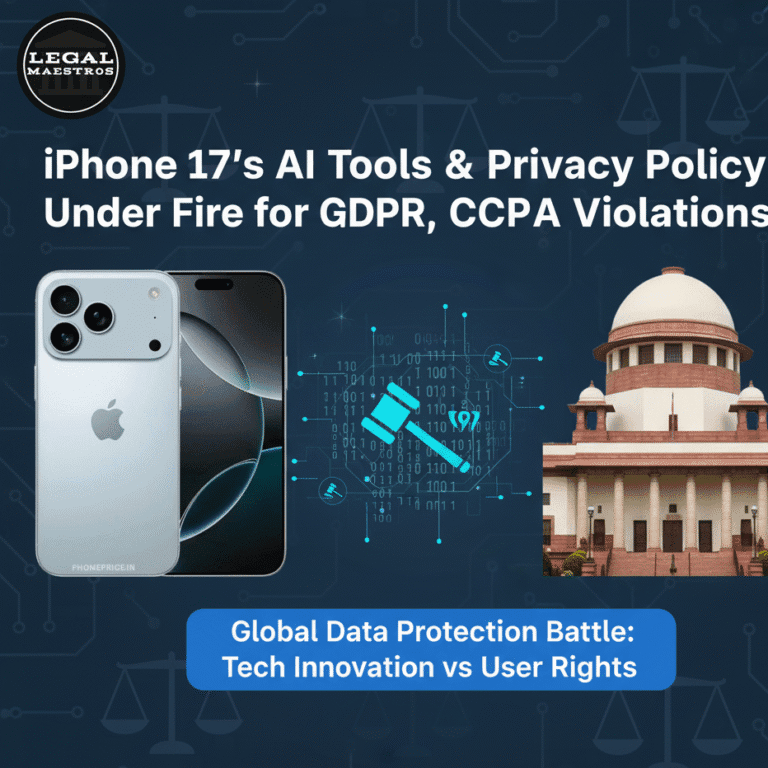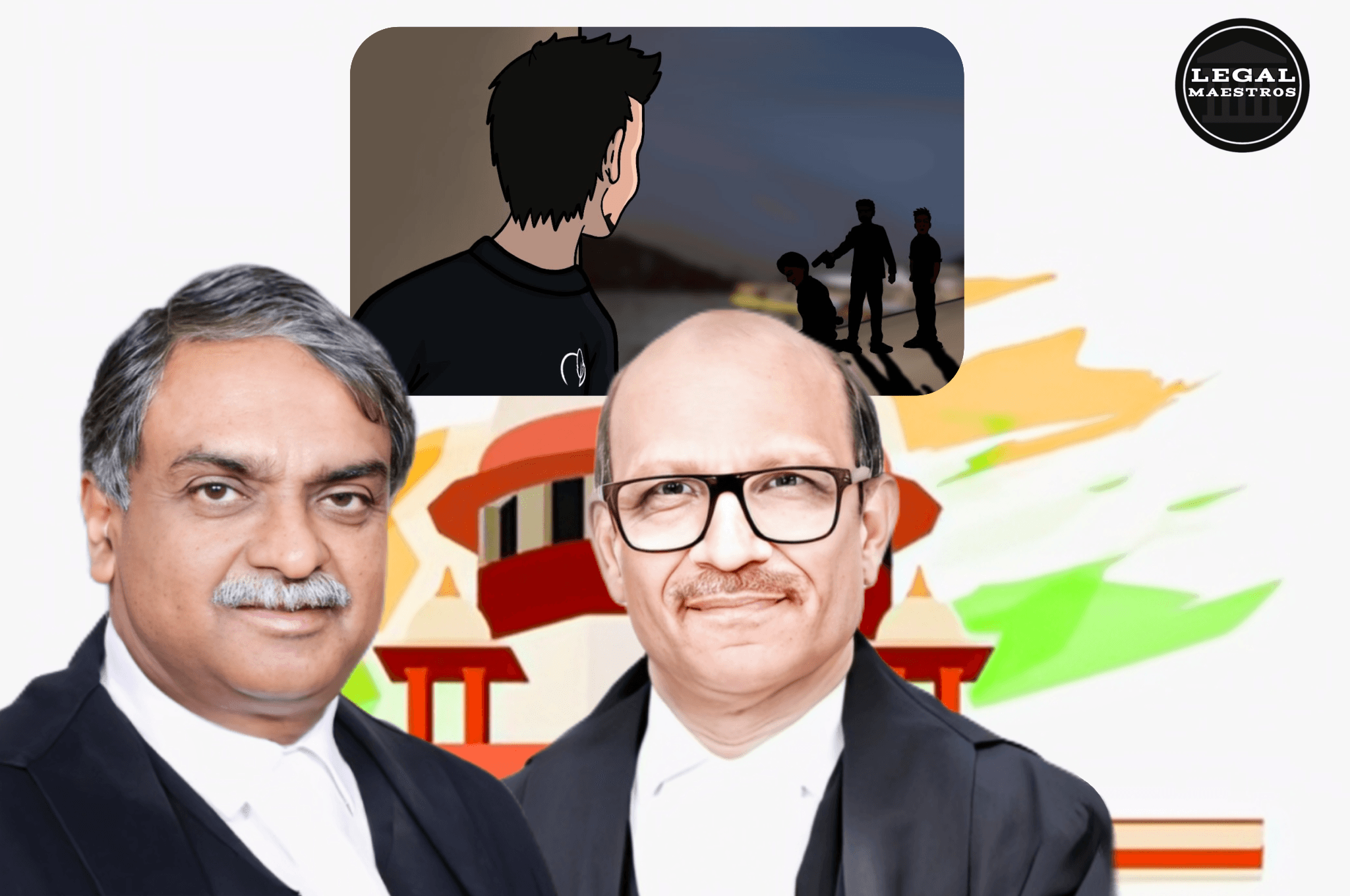
In an important verdict rendered on 22 nd July 2025, the Supreme Court of India in a case of Esakkimuthu and Pitchu Mani @ Pitchai Mani vs. It quashed the conviction of two convicted persons, Esakkimuthu and Pitchu Mani @ Pitchai Mani, and among other essentialities that indicated cracks in the case of the prosecution was the fact that there was no concrete evidence linking the accused persons to the offence. The case that had implicated Section 302 and 34 as mentioned in the Indian Penal Code, 1860 was focused on the credibility of eye witnesses and also limiting evidence in criminal cases. This case is an important lesson about the careful attention that must be given to evaluate evidence particularly when they are presented by interested parties.
Factual Matrix
This case was started due to an occasion which happened on April 14, 2013 when a murder occurred done to Edison Suvisedha Muthu. It was the prosecution case that Pitchu Mani @ Pitchai Mani (Accused No. 1 or A1) and Esakkimuthu (Accused No. 2 or A2) who were of the same village as the deceased were guilty of committing the crime. A feud between the deceased and Balasubramanian who is the father of A1 was reported to be the cause. It was alleged that the deceased had earlier assaulted Balasubramanian which resulted to a feud.
A2 is also said to have invited the deceased on that day to a TASMAC shop to buy alcohol. The prosecution then says that son (PW-1) and wife (PW-2) of the deceased developed suspicion and they mounted their bicycles to trail them to the shop, which they distance was about 16 kilometers. They were supposed to have seen A2 giving A1 a signal, whereby A1 emerged and indiscriminately beat the deceased using a weapon. The victim died on the scene.
Trial Court found A1 guilty of murder (IPC Section 302) and A2 guilty of murder (with common intention (IPC Section 302 read with IP Chapter 34) and awarded them life imprisonments. This conclusion was mainly due to the fact that the Trial Court largely relied upon the eyewitness statements of PW-1 and PW-2, which has been found to be, natural, consistent, credible and free, even though the other witnesses have proved hostile. The context of the crime under discussion was considered to be established, and the finding of the motorcycle of A2 and the confession of the use of the weapon (an aruval) substantiated the version of the prosecution. This decision was supported by the Madras High Court to the rejected appeals by the accused.
Basic Problems and the Analysis of the Court
In its line of arguments, the Supreme Court concentrated on some main points that raised serious concerns about the validity of the evidence delivered by the prosecution. The gist of the issue touched by the court was the testimony of PW-1 and PW-2 son and wife of the deceased respectively.
Analysis of Interested Witnesses
The first conflict was that PW-1 and PW-2 were interested witnesses. The Court repeated the well-established rule that the testimony of interested or related witnesses has to be weighed with particular attention and caution. It ethically highlighted that such testimonies demand higher level of evidence that can eliminate any exaggeration. This was very prudent since majority of other independent witnesses had become hostile.
Travel Distance Impossibility and Travel Time Impossibility
The likely unlikeliness of PW-1 and PW-2 having covered 16 kilometers on one bicycle in 30 minutes is one of the greatest beliefs that were cast by the appellants and admitted by the Supreme Court. According to the prosecution timeline, we were told that the deceased started off with A2 due to the fact that both left around 12 noon and incident took place at 12.30 p.m.. This only left half of an hour and the witnesses had to cover the mentioned distance, by meeting the deceased and then witnessing the attack.
The trial Court and the High Court had casually dismissed this point of argument citing the fact that PW-1 was a boy, 17 years old, in a state of distress and hence was traveling fast. It even went to the extent that the High Court speculated that there was possibly another shorter route that could have been used. This, however, was termed by the Supreme Court to contain absurd reasoning, more so considering that the distance of sixteen kilometers had also been agreed by PW-1. The Court held it very improbable that there could be such a distance covered in such a time by a 17-year-old boy and his middle-aged mother being a pillion rider. With this inherent improbability, the Court held that it casts colossal doubts on the credentials of PW-1 and PW-2 being under the crime spot, thus causing the rest of the prosecution story to be highly unbelievable and without substantial evidence about the input of the appellants.
Innatural Testimony of Eye-witnesses
It was also a question to the Court that the manner in which PW-1 and PW 2 behaved after supposedly witnessing the murder was unnatural. At the time of the attack, they were present at the crime scene and therefore had all the opportunity to rescue the dead, but none of them tried. Worse, they used 16 kilometers to the house and then to the police station after the incident when in actual sense a police station was on the way between the liquor shop and their residence. Their credibility was also not helped when they could not offer a satisfactory explanation to this glaring loophole.
Inconsistencies of Other Witnesses and Medical Evidence
Another factor that made the testimony of PW-1 and PW-2 unreliable is that there was no other so-called eye witness that could vouch the side of the prosecution. PW-4, PW-5 (customers) and PW-6 (manager of the TASMAC shop) were treated as hostile and said that four or five persons assaulted the deceased. This went against the story by the prosecution of just two attackers.
In addition to it, the report done after the death of the person found 26 injuries on the body. According to the Court, these vast damages could not be imposed by a single attacker, they could have more likely been a consequence of an assault by multiple people. This is in accordance with the reports by the hostile witnesses and leaves a possibility that the deceased, being a drinker and a criminal under Goondas Act, had enmities with several people who might have even attacked him and inflicted death. These are some of the likely explanations of the case, which could not be disregarded, and which increased the uncertainty of prosecution side of the case.
Finally, the Supreme Court dismissed the appeal and found that the prosecution had not proved its burden of proving the guilty of the persons under appeal beyond reasonable doubt. The improbabilities inherent in them and the dubious actions of the main participants of the case, and all these are in conflict with other pieces of evidence had cast an impressionable cloud of doubt upon the presence of the accused persons at the scene of the crime itself. Under these conditions, the Court decided that the accused individuals needed to be innocence.
As such the appeals were admitted and the judgment of the High Court of Madras as also the Trial Court was quashed and set aside. Esakkimuthu and Pitchu Mani @ Pitchai Mani were absolved of the charges put on them and released immediately. This decision is the main reminder of the underlying precept of the criminal law which is that suspicion though powerful cannot substitute for its proof and that all reasonable doubts have to finally favor the accused.
For any queries or to publish an article or post on our platform, please email us at contact@legalmaestros.com.
